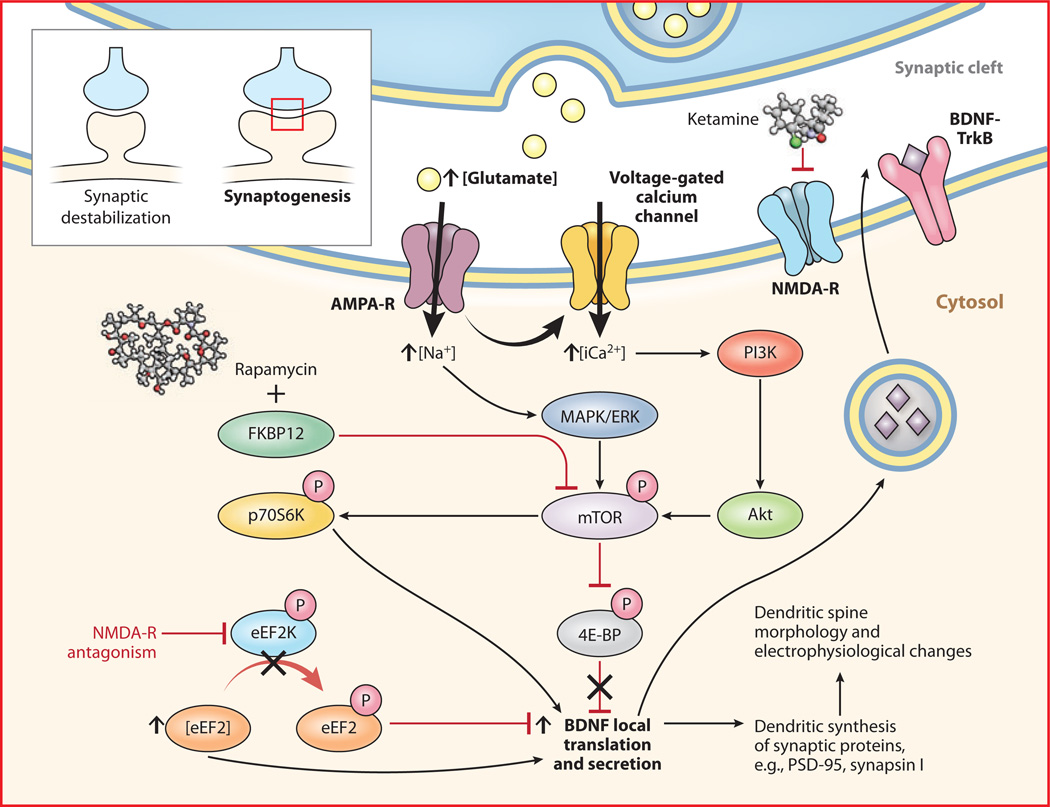Figure 1.
Synaptic and intracellular processes activated by the rapid-acting antidepressant ketamine. Preliminary preclinical and unpublished clinical data suggest that postsynaptic NMDA receptor antagonism increases presynaptic glutamate release (i.e., glutamate “surge”). Glutamate is then hypothesized to increase AMPA/NMDA receptor flux. AMPA channel opening in the CNS increases sodium and, indirectly, calcium, stimulating the PI3K cascade to phosphorylate mTOR through Akt. Activated mTOR then phosphorylates p70S6K, increasing translation of downstream postsynaptic targets (notably, mTOR activity can be inhibited by rapamycin through the formation of an inhibitory complex with FKBP12). Activated mTOR also inhibits 4E-BP to relieve inhibition upon translation. NMDA receptor activation also inhibits eEF2K, which increases levels of dephosphorylated eEF2. Dephosphorylated eEF2 relieves inhibition upon BDNF translation in dendritic spines and promotes local secretion, which, in turn, binds to cognate TrkB receptors to activate intracellular mTOR and its downstream targets. In sum, the translational activation induced by acute NMDA receptor blockade increases the expression of several neuromodulatory proteins involved in, among other effects, postsynaptic scaffolding, neurotransmitter dynamics, and dendritic spine morphogenesis from synaptically unstable filopodia to synaptically dynamic mushroom-shaped spines (see inset), which form the morphological substrate for antidepressant-like behavioral effects. Through release of inhibition upon local translation of BDNF, ketamine increases excitatory postsynaptic currents in prefrontal cortical and hippocampal neurons. Abbreviations: 4E-BP, 4E-binding protein; AMPA, 2-amino-3-(3-hydroxy-5-methylisoxazol-4-yl)propanoic acid; AMPA-R, AMPA receptor; BDNF, brain-derived neurotrophic factor; CNS, central nervous system; eEF2, eukaryotic elongation factor 2; eEF2K, eEF2 kinase; ERK, extracellular signal-regulated kinase; FKBP, FK506 binding protein; MAPK, mitogen-activated protein kinase; mTOR, mammalian target of rapamycin; NMDA, N-methyl-d-aspartate; NMDA-R, NMDA receptor; p70S6K, p70 S6 kinase; PI3K, phosphoinositide-3 kinase; TrkB, neurotrophic tyrosine kinase, type 2.

